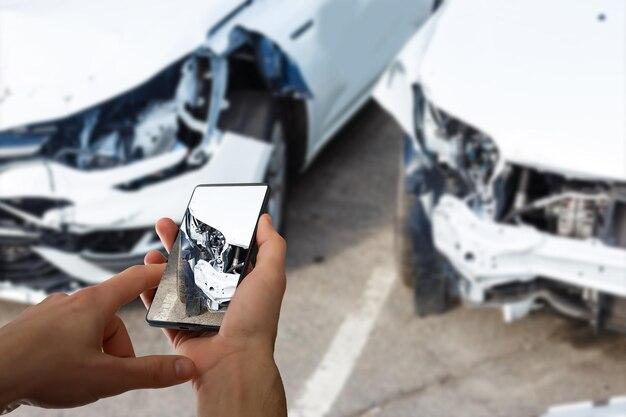Accidents can be stressful and confusing. Our adrenaline is pumping, and it’s easy to forget important details. That’s where evidence comes in. The more substantial the evidence, the better our chance of a fair outcome.
Photographs are a powerful form of evidence. They can capture crucial details that might fade from memory over time, such as the position of vehicles, damage sustained, and even road signs or weather conditions. These photos can be invaluable when the victim decides to get legal help from a car accident attorney to navigate the complexities of an insurance claim.
In this article, we’ll explore the benefits of taking pictures after an accident and offer tips to help you capture the most useful evidence. Let’s get started!
Capturing the Scene: Types of Photos for the Victim
Not all pictures are created equal. Some types of photos can provide more valuable evidence than others. Here are a few key shots you should try to get after an accident:
- Wide shots of the entire accident scene: This helps capture the overall layout and location of the accident. Get pictures that show the surrounding area, including traffic signs, traffic lights, and any buildings or landmarks nearby. This establishes the context of the accident.
- Close-up shots of vehicle damage: Take detailed pictures of the damage to all vehicles involved in the accident. Focus on dents, scratches, broken windshields, deployed airbags, and any other damage. Include close-ups of skid marks on the road and any debris scattered around the accident site. These details can be crucial in determining how the accident happened.
- Photos of injuries (if possible): Before taking any pictures of injuries, seek medical attention immediately. If you have visible injuries and can take pictures safely, document them as soon as possible. These photos can be helpful evidence, especially if your injuries worsen over time.
- Photos of road and weather conditions: Document the weather conditions at the time of the accident. Take pictures of rain, snow, fog, or anything else that could have affected visibility or road conditions. Additionally, capture photos of any road hazards, like potholes, debris, or construction zones, that might have contributed to the accident.
- Photos of driver’s licenses and insurance information (if safe and possible): If you can safely do so, take pictures of the driver’s licenses and insurance cards of everyone involved in the accident. This information will be essential when filing an insurance claim.
Benefits of Taking Pictures After an Accident
Taking pictures after an accident isn’t just about capturing the moment; it’s about gathering valuable evidence that can benefit you in the long run. Here’s how photos can play a crucial role in your case:
Accurate Documentation
Accidents can be chaotic, and memories can become fuzzy over time. Photographs provide a clear and objective picture of the accident scene. These images can help reconstruct the events leading up to the accident, including the positioning of vehicles, traffic signs, and any other relevant details. With clear visual evidence, you’ll have a stronger foundation to build your case.
Strengthening Your Claim
Accidents often involve conflicting stories. Photographic evidence helps support your account of what happened. Pictures can clearly document the damage to your vehicle, the location of debris, and even the weather. This evidence can be crucial in establishing the fault and liability of other parties involved in the accident.
Avoiding Disputes
Accidents can be stressful, and emotions can run high. In such situations, disagreements about the details of the accident are common. Pictures can act as a neutral third party, preventing disputes about things like the severity of damage or the positioning of vehicles. They can also minimize the chance of false claims from other parties involved.
Securing a Fair Settlement
Insurance companies rely on evidence to determine fault and settle claims. Strong photographic evidence can significantly strengthen your case. You can expedite a fair settlement with the insurance company by providing clear documentation of the accident. In some cases, photos might even help avoid the need for a lengthy and expensive legal process.

Additional Tips for Taking Pictures After an Accident
Here are some quick tips to ensure you capture the best possible evidence:
- Multiple Angles: Don’t just take one picture! Snap photos from various angles to capture the entire scene and all the important details.
- Timestamps: Use your phone’s date and time stamp function to ensure your photos are properly dated. This creates a clear timeline of the event.
- Safe Storage: Store your photos securely in a cloud storage service or a separate device in case your phone gets damaged.
- Minimize Scene Alteration: If possible, avoid moving vehicles until the police arrive to document the scene. This will help preserve the evidence for a more accurate investigation.
When Seeking Legal Help is Essential
While taking pictures after an accident is a smart move, there are situations where seeking legal help is essential. If the accident involved multiple vehicles, severe injuries, or complex legal issues, consulting a car accident attorney is highly recommended.
An experienced attorney can guide you through the legal process, ensure your rights are protected, and help you navigate the complexities of insurance claims. Remember, the benefits of having strong legal representation on your side can be significant.



